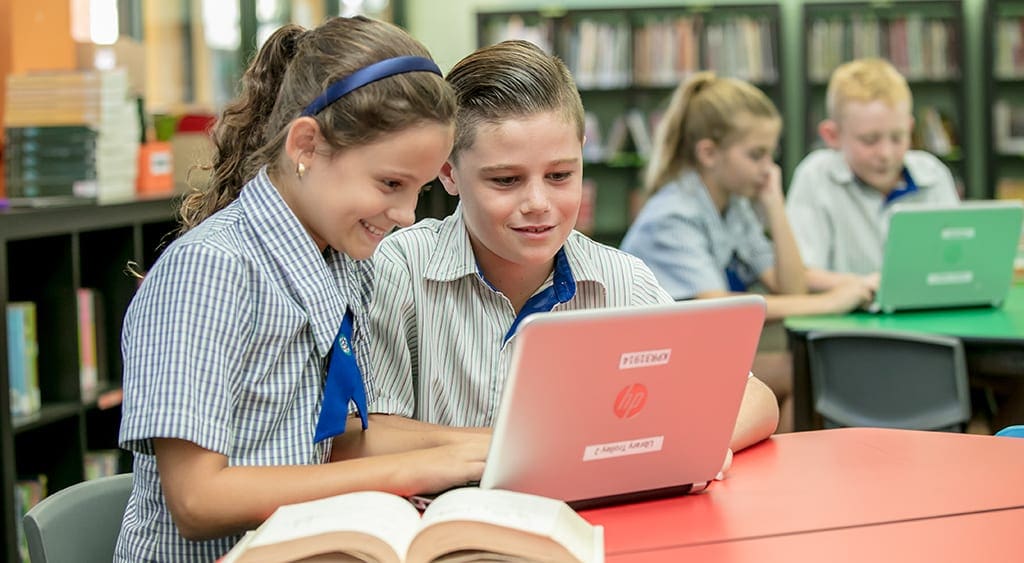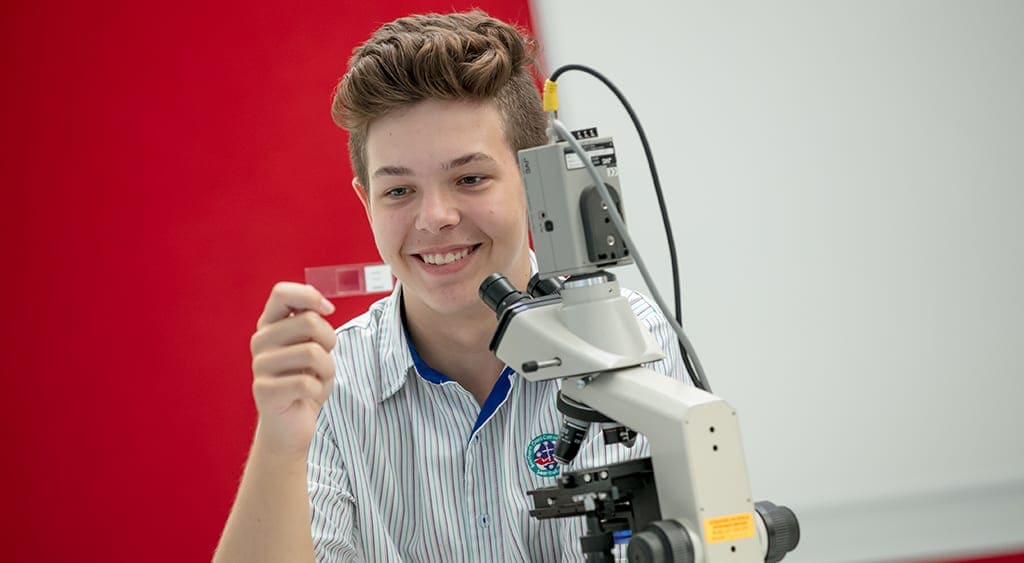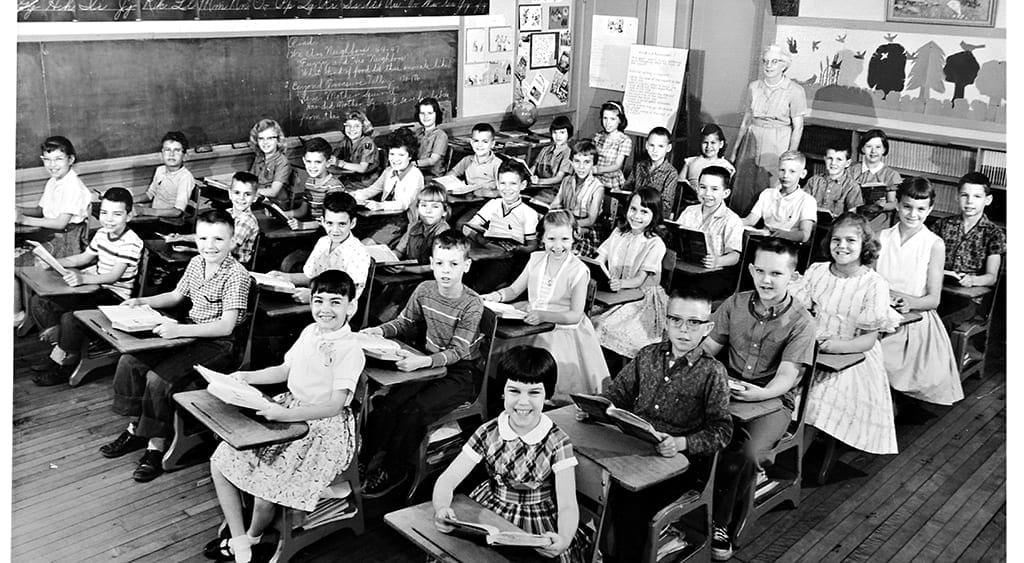Schools then and now – the face of schools and education in Australia is changing. Classrooms are changing. Learning is changing and it is not just about technology (read our article here about the benefits and drawbacks of ChatGPT in schools).
How is education and learning different now to ‘back in my day’? What is the difference between schools back then and now?
How is school different from then and now?
To find out how have schools changed, we talk to Catherine Lunney, the Primary Learning Leader at Southern Cross Catholic College. We wanted to know: how has school changed over time …. and why!?
Here are 10 differences between schools back then and now!
The Curriculum – back then
Since we became a nation each state has fought a battle (rivalling a State of Origin), over who had the best curriculum and hence the better education system and superior intellect.
From the 1980s a conversation was initiated that discussed the creation of a national curriculum. This conversation turned into negotiation and hence the Australian Curriculum has been created and implemented, providing every Australian student the same educational entitlement.
Content vs concept – changes in schools

In past generations, the learning focus in most classrooms (approaches like Montessori being the alternative) was all about the content i.e. the who, what, when and where. Students acquiring knowledge and practical skills were the lesson objectives.
Today we refer not to the lesson objective but the learning intention and the focus is placed on providing opportunities for students to move beyond knowing and doing to understanding. This is all about them understanding not only the information, but more importantly the concept. Acquiring conceptual understanding provides a strong foundation for their future learning and life experiences.
Teaching vs learning
In modern terminology, the classroom has been ‘flipped’. ‘Back in the day’ the teacher talked for approximately 80% of the lesson and the students worked for 20%. Today the teacher ‘hopefully’ holds the floor for 20%, allowing students 80% of the time to be engaged in their learning by doing.
Passive vs active learning
The passive learner sits, listens, answers the teacher’s questions and does as told – this is typical of the learner ‘back then’.
Today the active learner not only answers questions but also learns to pose open, fertile questions that will lead to in-depth investigations. The student is active in action and actively engaged in the learning process from co-constructing the learning intentions and success criteria, to taking ownership of the learning activities and assessment tasks.
Discipline
Changes in school disciplinary practices are as much a result of global cultural change in regards to our understanding of societies responsibility towards children in general, as they are about changes within education. Gone is corporal punishment, the cane, verbal abuse, sarcasm, loss of learning time and the writing of mindless lines.
Today we focus on repairing relationships and harm through an inclusive practice that includes everyone involved. This approach shifts the focus away from punishing children to what is, and always should be our core business of learning: learning about our rights in relationship with our responsibilities to others.
Playgrounds – What’s in and what’s out
Work Place Health and Safety regulations have necessitated marked changes to playgrounds and play.
What school games are out: See-saws, swings, slippery dips, marbles, unsupervised games and use of equipment, bare feet, tackling, a game of Brandy etc
What school games are in: Protective cushioning on goal posts, adventure playgrounds designed to develop gross motor skills, balance and coordination, compulsory fully enclosed shoes, compulsory hats …
Why school games have changed: Student safety first and foremost.
Technology

We’ve gone from the slate, to the ink-well, exercise book, pen, personal computer, laptop, iPad and even to the mobile phone. The classroom therefore is no longer the bastion of learning. Just as the ‘Flipped Classroom’ has changed the relationship dynamics within the classroom, so too has it changed its location.
Digital technologies today allow the teacher to reach out beyond their space in the school to be present in the student’s home etc. A lesson taught, recorded and uploaded can be revisited as often as needed. This gives students the opportunity to learn something they may have missed or not understood the first time.
Resources
Once upon a time the resources available for teaching and learning consisted of books, blackboards, blocks and other basics.
Today the list of resources is endless and exciting, and their use is as divergent as one’s imagination. The digital classroom, the robotic classroom are not concepts of the future … they are here today and will only grow in application as the technology itself becomes more readily available and sophisticated.
Assessment
When I was at school I remember only four kinds of assessment, and these included a) the worksheet, b) the test, c) the project and d) the essay. Today the assortment of assessment tasks is as wide ranging as the many ways we can communicate. These might include podcasts, creating movies, multi-modal presentations, art installations etc.
Today more students can effectively share their learning because of the many modes and mediums with which they can express themselves.
Learning to read and write
Learning to read and write has always depended on the explicit instruction of decoding, encoding and comprehension skills. Both THEN and NOW students learn the sounds, letters, sight words and origin of words that make up English.
If there is a difference today it is that these important fundamental building blocks of literacy are also learned in context with literature and life.
Changes in schools are a part of every modern school and every school will want to ensure their practices are up to date. All schools are looking to provide what are in the best interests of the students.
This article has given you a good list and answered the question: How is school different from then to now?
Find out more about Southern Cross Catholic College.
This article was published in Issue 22 of our print magazine, June/July 2017.

